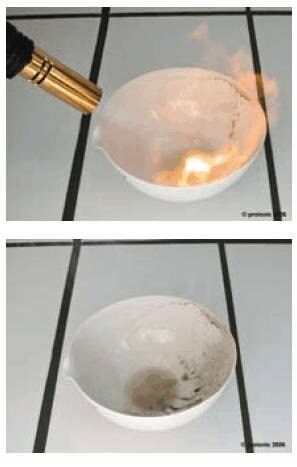Ionic Liquids Properties & Applications
Roland St. Kalb, Michael J. Kotschan
proionic Production of Ionic Substances GmbH, Leoben, Austria
Ammonium and Phosphonium dibutylphosphates
Most commercially available ionic liquids are based on the prominent dialkyl- or trialkylimidazolium cations rather than on tetraalkylammonium or tetraalkylphosphonium cations. A major contributor to this fact may be the unusually high melting points and high viscosities of the latter ionic liquids. In contrast, short-chained quarternary ammonium and phosphonium dialkylphosphates, such as tributylmethylammonium, tributylmethylphosphonium, triethylmethylammonium or triethylmethylphosphonium dibutylphosphates, show the following typical properties:
• Acceptable viscosities: 1000–1500 mPas (20 °C), 200–300 mPas (40 °C), 20–30 mPas (90 °C)
• Freezing points: < –10 °C
• Good thermal stability, flash points between 150 °C and 250 °C
• No hydrolysis
• Stability towards strong bases (no acidic protons, in contrast to imidazolium type ionic liquids)
• Unusual solvent properties: a lack of aromatic p-electrons or free lone pairs of electrons on the cation results in less donor-acceptor interactions with solutes
• Miscible with water and polar solvents
The phosphonium dibutylphosphates show exceptional thermal stability. During thermal decomposition at 1300 °C, inorganic phosphates are formed that suppress the ignition of a flame. Therefore, these substances show excellent flame-retardant properties, and have already been tested for application as non-flammable hydraulic fluids.1

Treatment of tributylmethylphosphonium dibutylphosphate by a gas burner flame for 60 seconds.
Dialkylimidazolium dibutylphosphates
1-Ethyl-3-methylimidazolium dibutylphosphate (EMIM-DBP) and 1-butyl-3-methylimidazolium dibutylphosphate (BMIM-DBP) are two interesting alternatives to “everyday” EMIM and BMIM ionic liquids. They are free of halogen or sulfur impurities, stable to hydrolysis, and show low viscosities and melting points.
Chiral and “Natural” Ionic Liquids
1-Ethyl-3-methylimidazolium L-(+)-lactate and 2-hydroxyethyltrimethylammonium L-(+)-lactate are two ionic liquids with chiral anions, which have the potential of chiral induction in enantioselective organic synthesis when used as solvents. The hydroxyl group in both the lactate anion and the 2-hydroxyethyltrimethylammonium cation possesses the ability to form hydrogen bonds to substrates and enzymes in biocatalytic reactions. Although chiral, they exhibit the typical properties of ionic liquids.
2-Hydroxyethyltrimethylammonium L-(+)-lactate and achiral 2-hydroxyethyltrimethylammonium acetate could be called “natural” ionic liquids due to the fact that they consist of common, naturally occurring ions. Thus, they are in our opinion among the “greenest” available ionic liquids since they are biodegradable, and apparently non toxic. 2-Hydroxyethyltrimethylammonium acetate has successfully been tested by proionic GmbH as a “green” medium in air-conditioning systems.
Per continuare a leggere, autenticati o crea un account.
Non hai un Account?